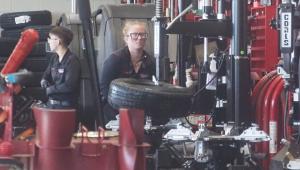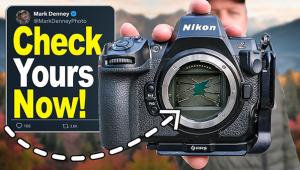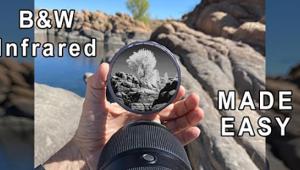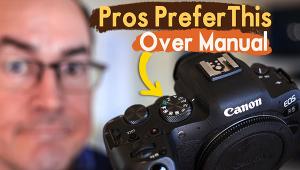Digital Help
Q&A For Digital Photography
Digital Help is designed to aid you in getting the most from your digital photography,
printing, scanning, and image creation. Each month, David Brooks provides solutions
to problems you might encounter with matters such as color calibration and management,
digital printer and scanner settings, and working with digital photographic
images with many different kinds of cameras and software. All questions sent
to him will be answered with the most appropriate information he can access
and provide. However, not all questions and answers will appear in this department.
Readers can send questions to David Brooks addressed to Shutterbug magazine,
through the Shutterbug website (www.shutterbug.com),
directly via e-mail to: editorial@shutterbug.com
or fotografx@mindspring.com
or by US Mail to: David Brooks, PO Box 2830, Lompoc, CA 93438.
--George Schaub
Note to Readers: I can be much more specific in my answers
if readers specify exactly which make and model of product they are asking about.
-- David Brooks
Digital Camera Batteries
Q. How many years do camera manufacturers produce proprietary batteries
for their cameras? My digital camera has been out of production for two years.
Should I stock up on the manufacturer's batteries now, or will the company
continue to produce those specific batteries in the years to come?
John
via e-mail
A. First of all, you need to find out if in fact the battery you have
in your camera is truly proprietary and is only used in that one product. I
think that might be a rare thing. Today there are so many different small devices
that are battery driven that most manufacturers adopt a particular battery size
and configuration from already existing ones that can be shared by many different
devices, brands, and makes. So, what I would recommend is doing some research
to find out if in fact your camera battery is truly unique just to that brand
and model camera, or if, which is much more likely, it is a standard battery
that is made by several battery companies and is used in other devices of different
brands.
If in fact the battery is made only by one company and is unique to your camera,
it may be prudent to stock up, and put the spare battery in refrigeration. If
it is a standard battery shared with other products, then it will probably be
available for some time to come.
Megapixels, How Many, And Is There A Comparison With Film?
Q. I'm hoping to hone in on your clear expertise in digital photography.
I am not a professional photographer, but I love taking pictures, particularly
landscape shots. I have a Sony Cyber-shot DSC-S85, which is a very nice consumer
camera sporting a Carl Zeiss f/2.0 lens. But I've been thinking of moving
on, and have my eye on Sony's new 10-megapixel Cyber-shot DSC-R1. Not
an SLR, but very nice and I have an affinity to those Zeiss lenses. I'm
not interested in investing enough to warrant owning multiple lenses, so these
so-called "prosumer" cameras seem to be a good compromise. This
Sony model seems to sport a much larger sensor than my current one, which should
minimize noise and leaves me feeling that the 10 megapixels will be utilized
properly.
My question is, how many megapixels does it take to compare to film? I understand
that there are plenty of variables that make that impossible to answer, but
in your opinion, where is that threshold likely to lie? I think 10 megapixels
takes me just beyond A3 size...but how does that compare to film? Any insight
you can provide would
be appreciated.
Andrew Cann
via e-mail
A. There really isn't any easy formula to relate film to digital.
It is really a prime example of an apples/oranges comparison. With film the
image is a physical entity that is an inherent part of the film itself, and
the information is actually made up of organized noise, the grain in the film.
Digital is essentially pure information with no physical existence. The media
on which an image file is stored has no relation to its physical nature whatsoever.
So, the only criteria is the one you suggested. With a sensor of so many pixels,
how large an image can you make? This varies considerably due to how the image
was made (skill of photographer), how it was saved, JPEG vs. raw, how the file
was processed and edited, and how it was re-sized if a large print is produced.
Recently I tested the new Canon EOS 5D, which has a 12.8-megapixel output. Without
any re-sizing I was able to make 12x18 images on 13x19 paper of excellent quality.
With even simple re-sizing, just using Photoshop, starting with raw format files
from the camera, making very good quality 16x20 prints would be quite easy.
What To Choose To Make Digital Copies Of Artwork
Q. I am an artist with photographic skills looking for the right camera to use
for copying flat, two-dimensional artwork with enough accuracy to do small to
medium size prints. With all the advances in Photoshop CS2, I am looking for
raw capture digital capabilities. Would you have a recommendation for a not
too terribly expensive good digital copy camera and/or SLR and lenses? Thank
you!
Acacia
via e-mail
A. I would recommend considering a digital SLR camera like a Canon
EOS 20D or Nikon D70. And, if you can afford it, also get a macro lens rather
than a "normal" lens for the camera. Although there are less costly
digital cameras in the prosumer category, like those made by Sony, and even
though the output specifications are comparable, I think for copying you would
find the optical reflex viewing, framing, and focusing provided by an SLR invaluable.
Sharpening Digital Camera Images
Q. I read somewhere that it is better to sharpen an image in Photoshop than
to sharpen the image with the camera's software when taking a picture
with a digital camera. Is that true? Does the same hold true with other functions
that both the camera and Photoshop do?
Richard
via e-mail
A. First of all, all digital camera sensor images require sharpening.
How much sharpening is applied by in camera processing can usually be adjusted
in the camera controls, and I doubt it can be "turned off" completely.
The camera designers do have an advantage in using a sharpening algorithm that
is tuned specifically to the characteristics of the capture sensor's specific
output.
The sharpening that is now available in Adobe's Photoshop CS2 is very
good because the application of Smart Sharpen's combined effect can be
adjusted for various causes of unsharpness, such as motion blur, out of focus
blur, etc.
The greatest danger with sharpening is to use too much. If too much sharpening
is applied it is almost impossible to undo the damage to image quality. So,
the ideal strategy is to sharpen modestly, depending on subject matter, in camera.
Then apply a small amount of added sharpening in post-processing, and only if
it is needed. Usually you need to do some test prints to find out if sharpening
is ideal. In many cases an image will print with good sharpness even though
it does not appear really crisp on screen. And usually, if the image appears
really sharp on screen, it is often oversharpened and results in a harsh-looking
print. In other words, the most effective sharpening is done in modest stages,
so you have just enough to make a sharp-looking print without harshness.
- Log in or register to post comments


































